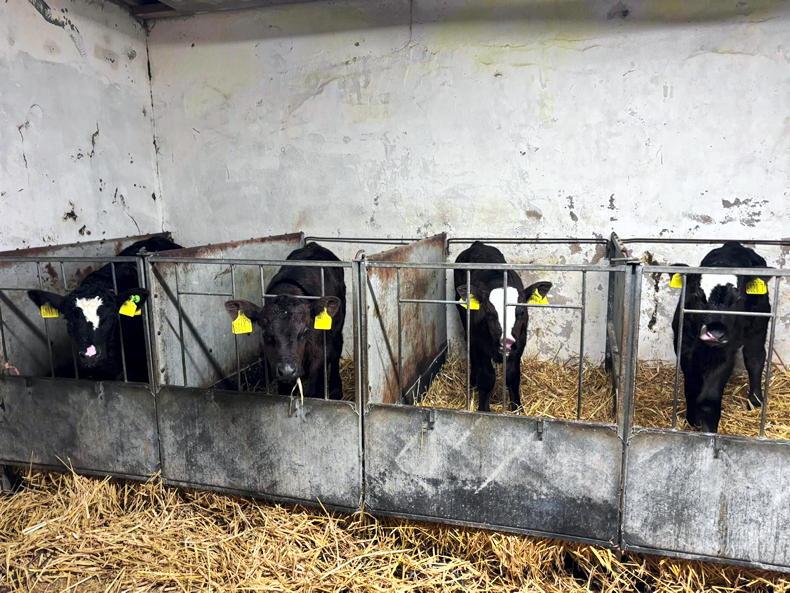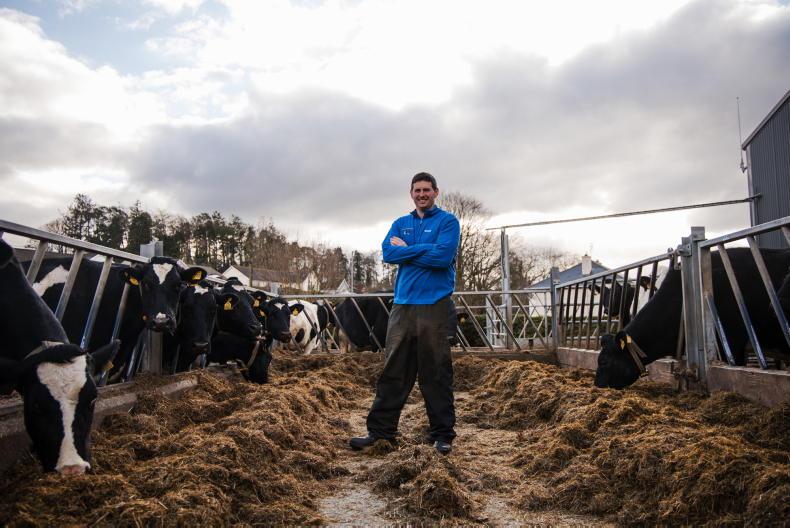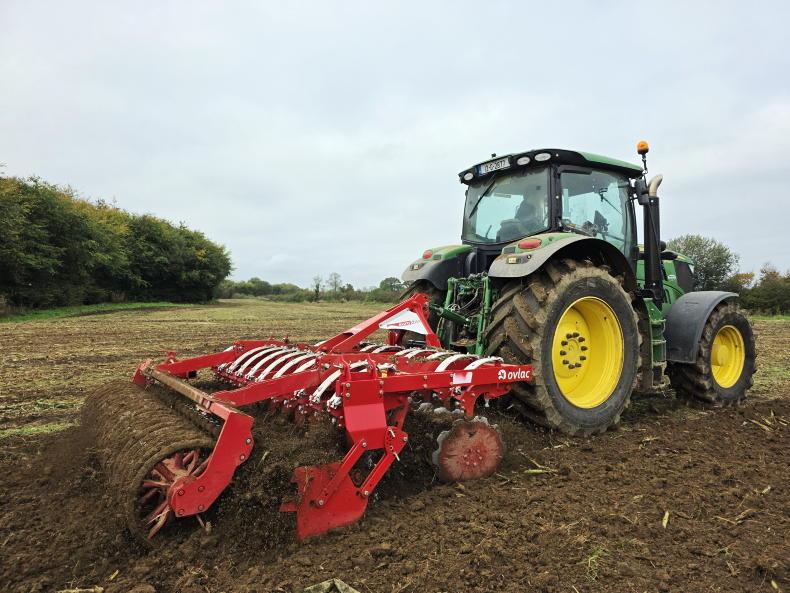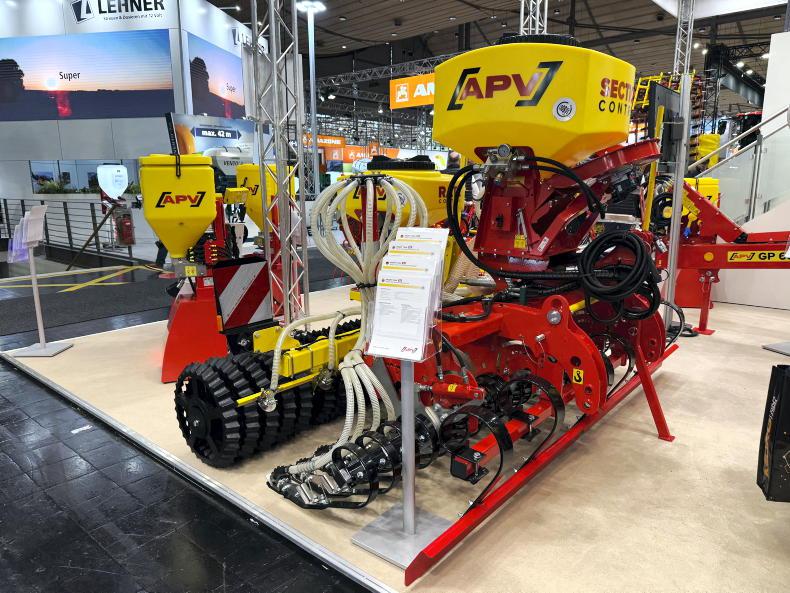Reseeding tired and underperforming grassland is one of the best investments livestock farmers can make with the financial outlay, recouped after two years.
That was the view of Germinal’s grassland technical specialists during an industry webinar last week.
According to Dr Mary McEvoy, the
average livestock farm in Ireland and the UK yields little more than 7t DM/ha annually.
However, there are farms using newer grass varieties consistently achieving 12t to 14t DM/ha each year from similar inputs.
“Teagasc research shows that every additional 1t DM/ha increase in grass grown is worth €173 (£152) to a dairy farmer and €105 (£92) to a drystock farmer.
“New grass varieties are much more efficient at utilising nitrogen, with reseeded swards yielding up to 25% more grass from the same nitrogen levels.
“That is a win for the farmer, but it is also a big positive from an environmental perspective at a time when farming is under scrutiny around emissions.
“More efficient grasses make better use of fertiliser, reducing nutrient lost to the atmosphere and watercourses,” McEvoy said.
While outlining the benefits of reseeding, McEvoy also stated that it is not the answer to poor soil fertility, compaction or poor sward management.
“Too much focus is placed on what is happening above the ground when reseeding, rather than what is happening below it.
“Soils below the optimum of pH 6.3 will see little advantage from reseeding. The same goes if phosphate (P) and potash (K) are below index 2. Soil fertility must be addressed before reseeding.
“A spade is one of the more valuable tools on every farm when reseeding. Walk the field and dig multiple holes and assess the soil.
“You want soils with small aggregate particles that easily crumble between the finger and thumb. Large clumps of soil that are hard to break up are a sign of poor soil health.
“How far do roots penetrate the soil profile and how many earthworms are present? Healthy soils will have lots of pores, and no sign of waterlogging that causes foul, putrid and discoloured clay.”
Sward deterioration
McEvoy advised farmers to consider reseeding once perennial ryegrass content in a sward drops below 60% or when there is a noticeable drop in silage yields.
Cutting heavy crops of silage too close to the ground will eventually exhaust the ryegrass plant’s root reserves
“Why is ryegrass content falling? Are weeds invading the sward? Is there damage from machinery, overgrazing or poaching in spring and autumn?
“Is the sward deteriorating from harvesting two or three heavy crops of silage every year and not replacing the nutrient offtake?
“Cutting heavy crops of silage too close to the ground will eventually exhaust the ryegrass plant’s root reserves and, again, yields will suffer.
“For every 1t/ha of dry matter removed, you need to supply 25kg/ha of potash back on to the soil. You also need 20kg/ha of sulphur for every cut of silage,” added McEvoy.
Farmers heard that reseeding 10% to 15% of the farm every year is good practice and means the whole farm is covered in eight to 10 years.
Only grasses published on the recommended variety lists should be used and sown at a rate of 14kg/acre. White clover should also be included to avail of the nitrogen fixing properties.
“Choose a medium-leaf clover variety for cattle grazing and small leaf for sheep.
“Conventional reseeding will cost anywhere from €700/ha to €800/ha, which works out at around £250/ac to £280/ac.
“This cost is recouped as the sward yields more grass over the season, increases animal performance from higher dry matter intakes and improved digestibility, as well as improved nitrogen efficiency,” McEvoy said.
Getting the right method for reseeding
The merits of spring versus autumn reseeding, as well as the method of establishment, was covered by William Fleming, who works with Germinal in Scotland.
“Don’t get too hung up on the timing or method choice,” said Fleming.
“It is more important to correct soil fertility and compaction, use the right seed rate, drill when conditions are suitable and manage new swards properly.
“Soil testing is important before reseeding. But you need to be thinking about which fields will be reseeded well ahead of undertaking the task.
“If lime is needed, it can take four to six months before soil pH is corrected. This needs to be factored in to your plans.”
Spring reseeding
Spring reseeding is popular in Ireland as soil temperatures are on the increase. Germination is normally faster compared with autumn reseeding.
There are also more opportunities to travel ground and control weeds post-emergence.
“However, the downside of spring reseeding is that you are taking fields out of use during the period of peak grass growth.
“Ploughed reseeds also need time for soils to tighten before they can carry livestock or machinery, putting pressure on other swards to maintain stocking rate.”
Autumn reseeding
In contrast, Fleming said an autumn reseed carried out from July to late August has fewer problems with weeds, an important factor when establishing clover swards.
“An autumn reseed will also be ready to deliver higher yields, and a potential 25% increase in nitrogen efficiency, during the spring. Just make sure the new sward is sown out before soil temperatures start falling.”
Drilling method
Minimum tillage methods are cheaper than ploughed reseeds and offer additional benefits such as less soil disturbance, reducing weeds and carbon loss.
As the old sward dies off, the seed bed can become acidic
“Getting good soil-to-seed contact is crucial. The old sward needs to be grazed tight before drilling, being cut for silage or broken up with tillage implements.
“As the old sward dies off, the seed bed can become acidic which makes lime important for germination.
“Tetraploid grasses are best used when stitching in or overseeding swards. Tetraploids have a large seed with greater energy reserves for establishment. They also grow tall and erect, reducing competition from weeds.
“If stitching clover, do not fertilise the seedbed or new sward afterwards. This will only encourage other grasses to outcompete clover seedlings.
“Stock should be back grazing the sward 10 days after drilling to keep old grasses down and canopy cover low.”
Ploughing
Ploughing remains the most popular method of reseeding and has it place.
However, every time soils are ploughed, it damages soil structure and biology as well as halving worm counts, advised Fleming.
“Based on grass trials, there was 400kg DM/ha more grass on ploughed reseeds over direct-drilled swards.
“Considering the additional cost, carbon loss and the time lag until the ploughed reseed was ready for grazing, there will be occasions when minimum tillage is the better option to consider.”
Weeds
“Get on top of weeds early and use the pull test to determine when the new sward is ready for grazing. Simply hold the new seedling between the finger and thumb, then pull.
“If the leaf tears away and the stem remains rooted in the ground, the sward is ready to raze.
“Ideally, use lambs for the first grazing as they are lighter and easier on the ground.”
Read more
‘Hard border’ for Northern Ireland fertiliser
Markets will struggle to justify milk price in excess of 40c/l - Ornua
Reseeding tired and underperforming grassland is one of the best investments livestock farmers can make with the financial outlay, recouped after two years.
That was the view of Germinal’s grassland technical specialists during an industry webinar last week.
According to Dr Mary McEvoy, the
average livestock farm in Ireland and the UK yields little more than 7t DM/ha annually.
However, there are farms using newer grass varieties consistently achieving 12t to 14t DM/ha each year from similar inputs.
“Teagasc research shows that every additional 1t DM/ha increase in grass grown is worth €173 (£152) to a dairy farmer and €105 (£92) to a drystock farmer.
“New grass varieties are much more efficient at utilising nitrogen, with reseeded swards yielding up to 25% more grass from the same nitrogen levels.
“That is a win for the farmer, but it is also a big positive from an environmental perspective at a time when farming is under scrutiny around emissions.
“More efficient grasses make better use of fertiliser, reducing nutrient lost to the atmosphere and watercourses,” McEvoy said.
While outlining the benefits of reseeding, McEvoy also stated that it is not the answer to poor soil fertility, compaction or poor sward management.
“Too much focus is placed on what is happening above the ground when reseeding, rather than what is happening below it.
“Soils below the optimum of pH 6.3 will see little advantage from reseeding. The same goes if phosphate (P) and potash (K) are below index 2. Soil fertility must be addressed before reseeding.
“A spade is one of the more valuable tools on every farm when reseeding. Walk the field and dig multiple holes and assess the soil.
“You want soils with small aggregate particles that easily crumble between the finger and thumb. Large clumps of soil that are hard to break up are a sign of poor soil health.
“How far do roots penetrate the soil profile and how many earthworms are present? Healthy soils will have lots of pores, and no sign of waterlogging that causes foul, putrid and discoloured clay.”
Sward deterioration
McEvoy advised farmers to consider reseeding once perennial ryegrass content in a sward drops below 60% or when there is a noticeable drop in silage yields.
Cutting heavy crops of silage too close to the ground will eventually exhaust the ryegrass plant’s root reserves
“Why is ryegrass content falling? Are weeds invading the sward? Is there damage from machinery, overgrazing or poaching in spring and autumn?
“Is the sward deteriorating from harvesting two or three heavy crops of silage every year and not replacing the nutrient offtake?
“Cutting heavy crops of silage too close to the ground will eventually exhaust the ryegrass plant’s root reserves and, again, yields will suffer.
“For every 1t/ha of dry matter removed, you need to supply 25kg/ha of potash back on to the soil. You also need 20kg/ha of sulphur for every cut of silage,” added McEvoy.
Farmers heard that reseeding 10% to 15% of the farm every year is good practice and means the whole farm is covered in eight to 10 years.
Only grasses published on the recommended variety lists should be used and sown at a rate of 14kg/acre. White clover should also be included to avail of the nitrogen fixing properties.
“Choose a medium-leaf clover variety for cattle grazing and small leaf for sheep.
“Conventional reseeding will cost anywhere from €700/ha to €800/ha, which works out at around £250/ac to £280/ac.
“This cost is recouped as the sward yields more grass over the season, increases animal performance from higher dry matter intakes and improved digestibility, as well as improved nitrogen efficiency,” McEvoy said.
Getting the right method for reseeding
The merits of spring versus autumn reseeding, as well as the method of establishment, was covered by William Fleming, who works with Germinal in Scotland.
“Don’t get too hung up on the timing or method choice,” said Fleming.
“It is more important to correct soil fertility and compaction, use the right seed rate, drill when conditions are suitable and manage new swards properly.
“Soil testing is important before reseeding. But you need to be thinking about which fields will be reseeded well ahead of undertaking the task.
“If lime is needed, it can take four to six months before soil pH is corrected. This needs to be factored in to your plans.”
Spring reseeding
Spring reseeding is popular in Ireland as soil temperatures are on the increase. Germination is normally faster compared with autumn reseeding.
There are also more opportunities to travel ground and control weeds post-emergence.
“However, the downside of spring reseeding is that you are taking fields out of use during the period of peak grass growth.
“Ploughed reseeds also need time for soils to tighten before they can carry livestock or machinery, putting pressure on other swards to maintain stocking rate.”
Autumn reseeding
In contrast, Fleming said an autumn reseed carried out from July to late August has fewer problems with weeds, an important factor when establishing clover swards.
“An autumn reseed will also be ready to deliver higher yields, and a potential 25% increase in nitrogen efficiency, during the spring. Just make sure the new sward is sown out before soil temperatures start falling.”
Drilling method
Minimum tillage methods are cheaper than ploughed reseeds and offer additional benefits such as less soil disturbance, reducing weeds and carbon loss.
As the old sward dies off, the seed bed can become acidic
“Getting good soil-to-seed contact is crucial. The old sward needs to be grazed tight before drilling, being cut for silage or broken up with tillage implements.
“As the old sward dies off, the seed bed can become acidic which makes lime important for germination.
“Tetraploid grasses are best used when stitching in or overseeding swards. Tetraploids have a large seed with greater energy reserves for establishment. They also grow tall and erect, reducing competition from weeds.
“If stitching clover, do not fertilise the seedbed or new sward afterwards. This will only encourage other grasses to outcompete clover seedlings.
“Stock should be back grazing the sward 10 days after drilling to keep old grasses down and canopy cover low.”
Ploughing
Ploughing remains the most popular method of reseeding and has it place.
However, every time soils are ploughed, it damages soil structure and biology as well as halving worm counts, advised Fleming.
“Based on grass trials, there was 400kg DM/ha more grass on ploughed reseeds over direct-drilled swards.
“Considering the additional cost, carbon loss and the time lag until the ploughed reseed was ready for grazing, there will be occasions when minimum tillage is the better option to consider.”
Weeds
“Get on top of weeds early and use the pull test to determine when the new sward is ready for grazing. Simply hold the new seedling between the finger and thumb, then pull.
“If the leaf tears away and the stem remains rooted in the ground, the sward is ready to raze.
“Ideally, use lambs for the first grazing as they are lighter and easier on the ground.”
Read more
‘Hard border’ for Northern Ireland fertiliser
Markets will struggle to justify milk price in excess of 40c/l - Ornua










SHARING OPTIONS